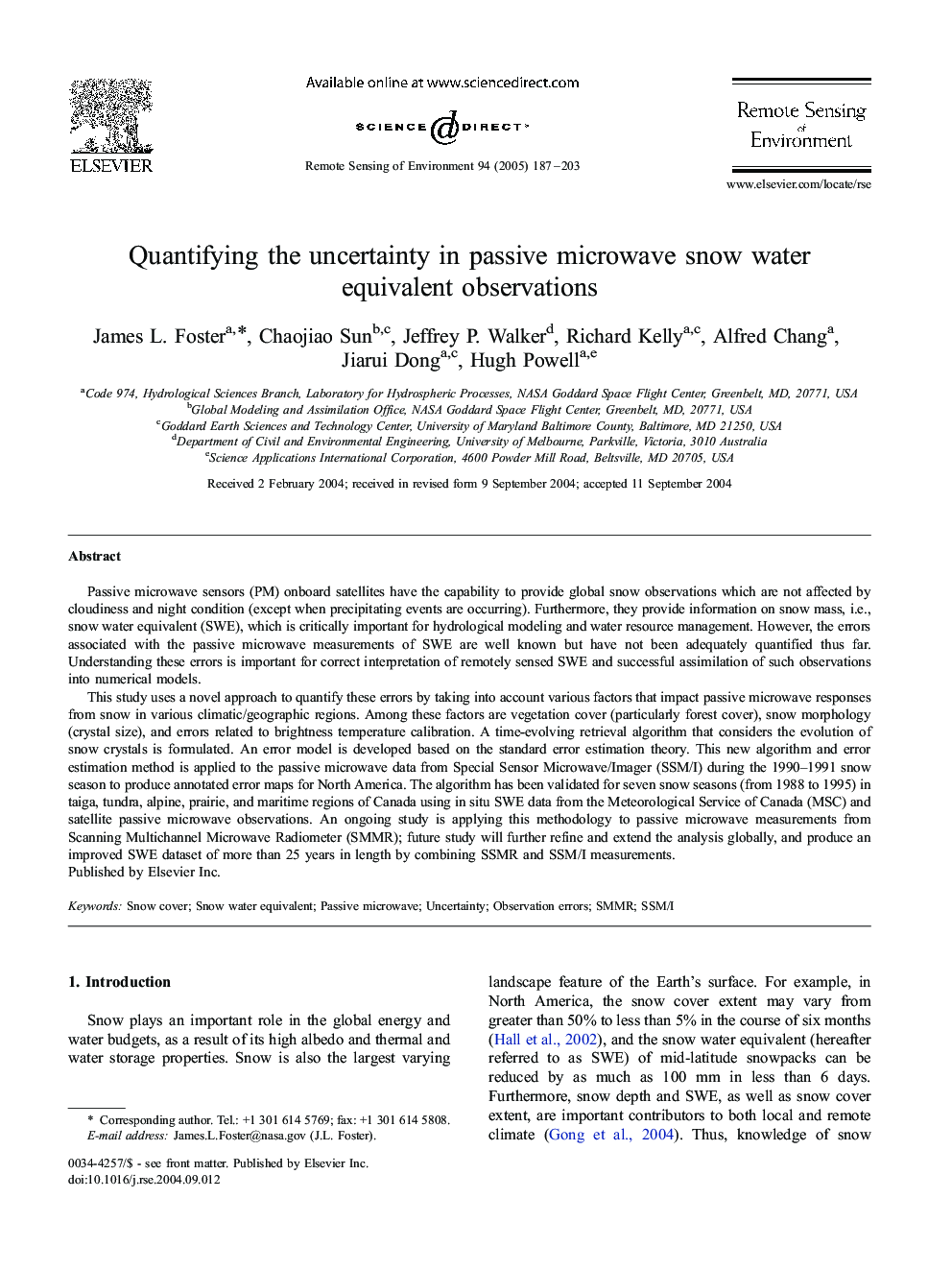| Article ID | Journal | Published Year | Pages | File Type |
|---|---|---|---|---|
| 10114348 | Remote Sensing of Environment | 2005 | 17 Pages |
Abstract
This study uses a novel approach to quantify these errors by taking into account various factors that impact passive microwave responses from snow in various climatic/geographic regions. Among these factors are vegetation cover (particularly forest cover), snow morphology (crystal size), and errors related to brightness temperature calibration. A time-evolving retrieval algorithm that considers the evolution of snow crystals is formulated. An error model is developed based on the standard error estimation theory. This new algorithm and error estimation method is applied to the passive microwave data from Special Sensor Microwave/Imager (SSM/I) during the 1990-1991 snow season to produce annotated error maps for North America. The algorithm has been validated for seven snow seasons (from 1988 to 1995) in taiga, tundra, alpine, prairie, and maritime regions of Canada using in situ SWE data from the Meteorological Service of Canada (MSC) and satellite passive microwave observations. An ongoing study is applying this methodology to passive microwave measurements from Scanning Multichannel Microwave Radiometer (SMMR); future study will further refine and extend the analysis globally, and produce an improved SWE dataset of more than 25 years in length by combining SSMR and SSM/I measurements.
Related Topics
Physical Sciences and Engineering
Earth and Planetary Sciences
Computers in Earth Sciences
Authors
James L. Foster, Chaojiao Sun, Jeffrey P. Walker, Richard Kelly, Alfred Chang, Jiarui Dong, Hugh Powell,
